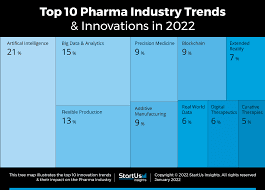Women’s Health – The Untapped Opportunity – Asrar Qureshi’s Blog Post #1062
Women’s Health – The Untapped Opportunity – Asrar Qureshi’s Blog Post #1062
Dear Colleagues! This is Asrar Qureshi’s Blog Post #1062 for Pharma Veterans. Pharma Veterans Blogs are published by Asrar Qureshi on its dedicated site https://pharmaveterans.com. Please email to pharmaveterans2017@gmail.com for publishing your contributions here.
 |
| Credit: Cnordic Nordic |
 |
| credit: MART Production |
 |
| Credit: Tima Miroshnichenko |
 |
| Credit: Yan Krukau |
This post is based on a McKinsey Report. Link at the end.
Preamble
Most top pharma companies derive more than 60 percent of their revenue from therapies for diseases that affect women uniquely, differently, or disproportionately. Despite significant strides in medicine, women's health remains an underexplored and underfunded sector. Many health concerns that disproportionately affect women are not sufficiently researched or addressed. Conditions such as endometriosis, polycystic ovary syndrome (PCOS), and various reproductive cancers receive a fraction of the attention and resources allocated to other health issues.
Challenges in Women’s Health
[Quote] Nearly half of the global population—and 80 percent of patients in therapeutic areas such as immunology—are women.1 And yet, treatments are frequently developed without tailored insights for female patients. Too often, researchers have viewed “women’s health” narrowly through the lens of reproductive organs, treated women as “small men” for other conditions, and ignored critical biological differences such as cellular sex (every cell in the body has a sex), hormonal impacts, and genetic factors. Addressing these differences is not just about equity—it drives more precise and effective healthcare for everyone.
A recent analysis by the World Economic Forum, in collaboration with the McKinsey Health Institute (MHI), revealed that women, on average, spend 25 percent more of their lives in poor health compared with men, partially because of a lack of sex-based treatment development and delivery. Addressing this disparity could improve quality of life for women and unlock more than $1 trillion in annual global GDP by 2040 and create new market opportunities for conditions with significant unmet needs. [Unquote]
Factors Contributing to Health Outcome Gap
Four key factors can be identified.
1. The understanding of sex-based biological differences is still limited. The root cause is that women of childbearing age were excluded from early clinical trials between 1997 and 1993. Male physiology was therefore established as default.
2. Healthcare delivery systems are often designed around men, with diagnostics and interventions frequently overlooking women’s unique symptoms.
3. Clinical decisions rely on incomplete or underused data, which is often not disaggregated by sex, leading to a significant underestimation of disease burden in women.
4. Finally, women’s health research remains severely underfunded. Female-only conditions account for just 4 percent of pharmaceutical pipelines, and in 2019 only 7 percent of NIH funding for rheumatoid arthritis—a condition that predominantly affects women—targeted female-focused studies, even though women account for 78 percent of the US rheumatoid arthritis patient population.
The Business Case
The pharmaceutical industry has a great opportunity here it they close the gap by investing in women’s health. Pharma companies can derive innovation for female-specific conditions such as endometriosis, and improve outcomes for shared conditions like heart diseases and diabetes.
There is more evidence now that differences include the active role of second X chromosome on women, particularly in immune responses. There is also physiological difference between women and men in fat distribution and metabolism that affect drug efficacy and safety in cardiometabolic treatments.
Couple of prominent examples make the point.
Novartis discovered that its heart failure drug ENTRESTO (sacubitril + valsartan), launched in 2015, was more effective for women, who otherwise are twice as likely as men to develop heart failure with preserved ejectio fraction. After conducting targeted clinical trials, they found that the drug reduced hospital stay for women by 33 percent. This led to expanded USFDA approval and enabled the drug to reach more than two million additional patients.
UCB found that. Its therapy for chronic inflammatory diseases, CIMZIA (certolizumab pegol), passes minimally into the placenta and the breast milk. On the basis of these findings, FDA approved its use for pregnant women in 2024. Considering that about 17 percent pf the candidate patients are women of child bearing age, this approval is very important. Women aged 18 to 45 years can now continue treatment throughout pregnancy.
Another significant finding is about combination inhalers for asthma. While asthma is more prevalent in women, yet they experience lower efficacy of treatments, and therefore lower compliance and adherence. Combination inhalers containing corticosteroid and long acting beta agonist (Seretide, GSK and Symbicort, AstraZeneca) demonstrate nearly 40 percent lower efficacy in women, partly due to hormonal fluctuations. Achieving sex-parity in asthma treatment could could result in addition of over 30 percent women more effectively treated.
R&D Focus
Research and Development may be redirected to help close this gap. The focus may include the following factors.
• Conduct sex-specific preclinical research. In-vitro testing should use female cell lines. Animal models should move beyond standard male animals and include females to better understand female responses.
• Increase basic research into female specific conditions with high unmet needs and good market potential. Conditions such as PCOS – polycystic ovary syndrome affects millions of women, yet the research in this area remains underfunded and scant. Endometriosis affects one in ten women globally and may represent a potential market worth over $200 billion.
• Design trials to include and account for sex-specific differences and to achieve appropriate sex balance in participation. Women are included in clinical trials even now, but protocols should be designed to reflect different inclusion and exclusion criteria based on different disease manifestation in men vrsus women. Trial logistics should also consider handicaps for women and address them.
Sum up
Pharma companies can deliver improved outcomes immediately by applying a women’s health perspective to their current portfolios. They can do so by deepening their understanding of a female’s patient journey and integrating that knowledge into their commercialization strategies. Such an approach can help close sex- and gender-based gaps, particularly in diagnosis, therapy escalation, and adherence.
Concluded.
Disclaimers: Pictures in these blogs are taken from free resources at Pexels, Pixabay, Unsplash, and Google. Credit is given where available. If a copyright claim is lodged, we shall remove the picture with appropriate regrets.
For most blogs, I research from several sources which are open to public. Their links are mentioned under references. There is no intent to infringe upon anyone’s copyrights. If, however, it happens unintentionally, I offer my sincere regrets.
Reference:
https://www.mckinsey.com/industries/life-sciences/our-insights/closing-the-womens-health-gap-biopharmas-untapped-opportunity?stcr=97136BA6BDD64C2396A57E9487438CC6&cid=other-eml-alt-mip-mck&hlkid=06f4bf1668724ccc8a6375e60f5aefb1&hctky=15999472&hdpid=3fd7a62d-4998-4b5c-8584-690476adc439



Comments
Post a Comment